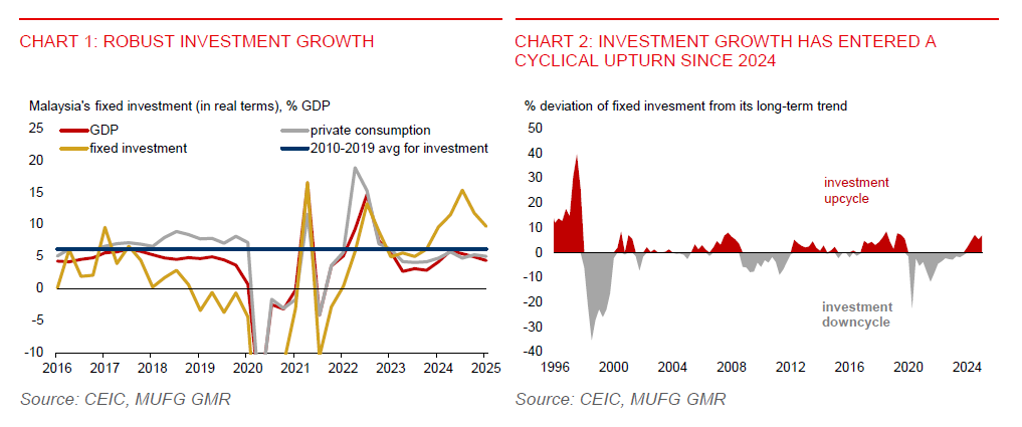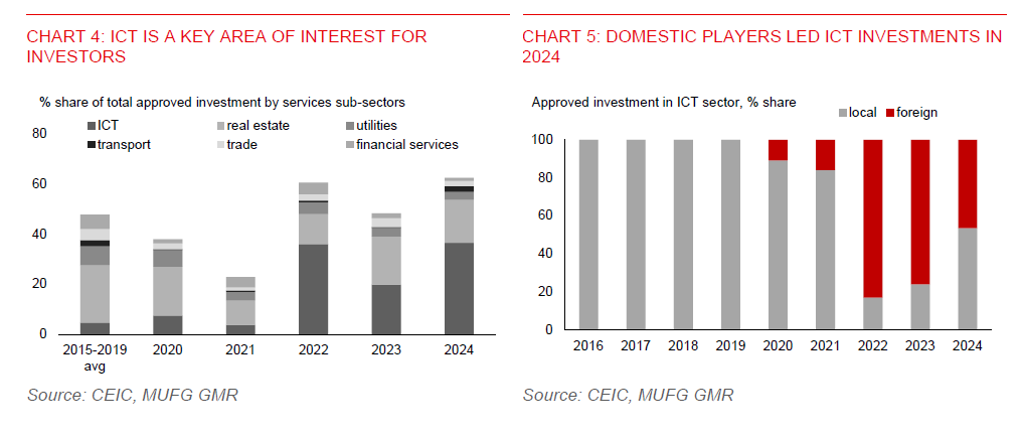Key Points
Please click on download PDF above for full report
- Malaysia’s economic outlook remains clouded by global trade uncertainty, but a strong domestic investment upcycle has emerged as a key offset. Fixed investment growth (+9.7%yoy) outpaced private consumption (5%yoy) in Q1 2025. This is a trend that has begun in 2024, while investment levels have exceeded long-term trends since 2023.
- The policy driven investment upturn could be sustained this year, despite trade headwinds. The high realisation rate of investment approvals has already translated into stronger GDP contributions in recent years, and this trend is likely to continue this year. Total approved investments surged 16.5%yoy in 2024, 83% above pre-Covid level in 2019.
- A large share of approved investment is contributed by domestic players, which could partially offset the impact from delays and cancellations by export-oriented firms. The investment surge has also been marked by a notable increase in approved ICT investments (> 1/3 of total approved investments). Domestic players led the charge in 2024 (> 50% of approved ICT investments), while foreign players remain strong (+30%yoy in 2024).
- Nonetheless, fresh trade tensions and heightened global policy uncertainties from the US will remain a headwind for Malaysia’s external sector. Exports to the US that could be affected by US tariffs account for about 9% of Malaysia’s GDP, with additional spillover risks from higher US tariffs on China. Malaysia’s deep integration with China’s supply chain heightens vulnerability to a slowdown in Chinese demand. Sectoral risks are concentrated in optical/scientific equipment, machinery, and electrical goods.
- BNM has become somewhat dovish at its May policy meeting. But the subsequent US-China tariff de-escalation may give the central bank reason to maintain a prolonged rate hold this year. Nonetheless, BNM’s dovish rhetoric in May signals its readiness to act should growth weaken materially. Moreover, inflation has moderated to 1.4%yoy in April.
- The ringgit will likely be supported by a weak USD, US-China tariff de-escalation, and sustained investment flows. Ringgit bonds also remain in high demand, with a strong 3.3x bid/cover ratio for the 20-year GII bond auction on 30 May and rising foreign holdings of local government bonds (21.5% in April vs. Feb low of 20.6%). Foreign currency deposits also hit a record 11.6% of bank deposits in April, adding FX stability.



